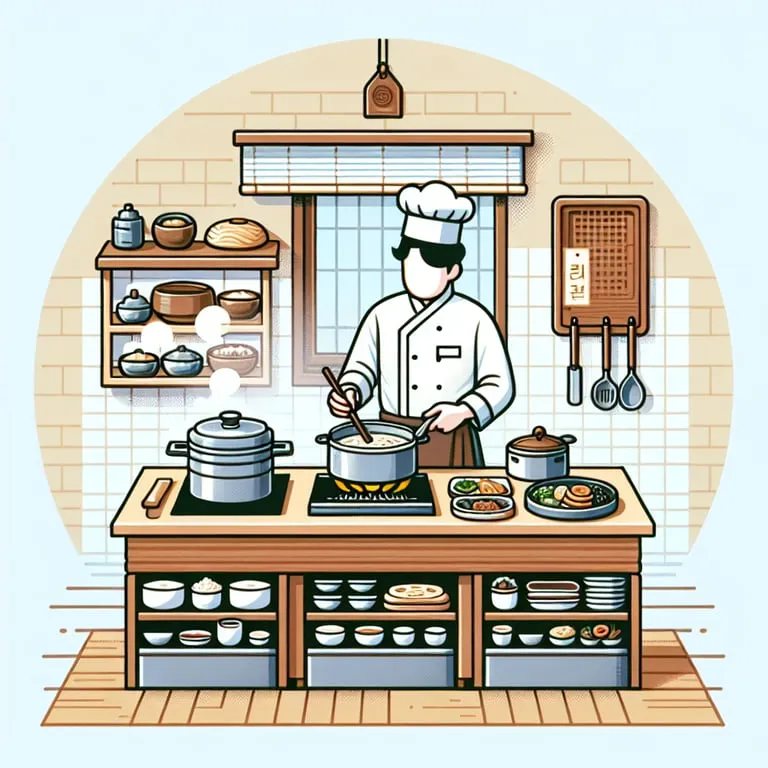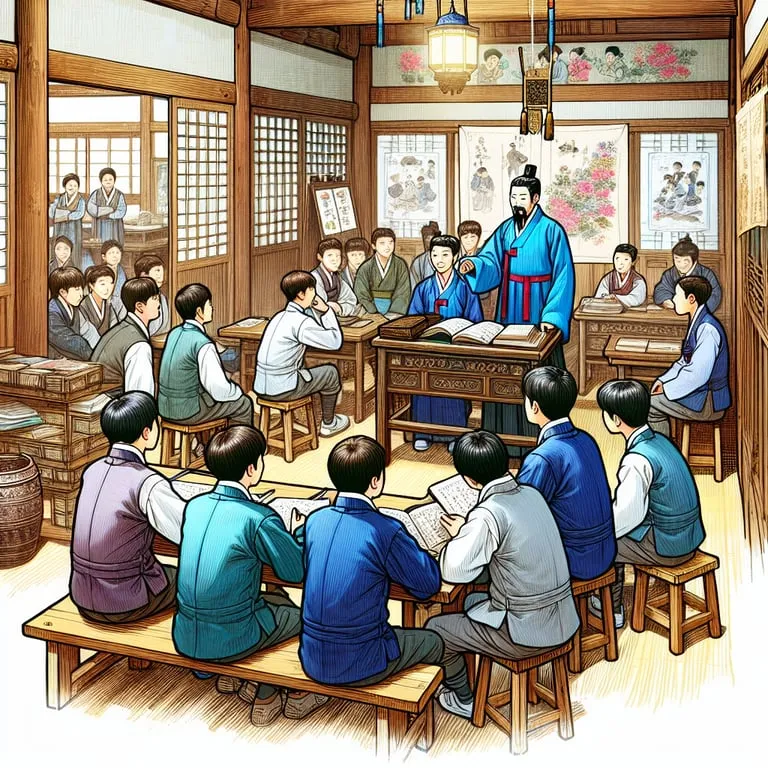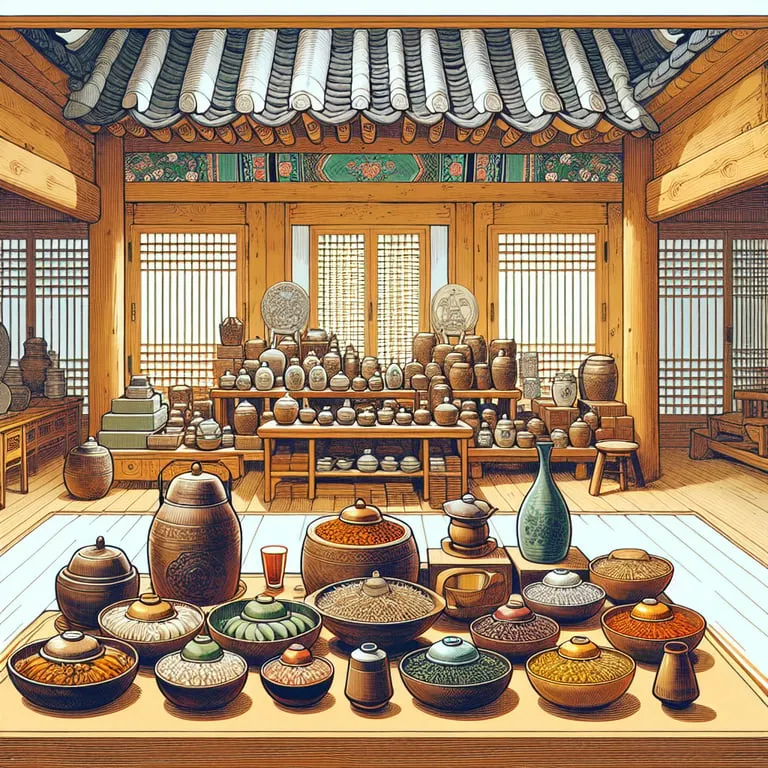The global allure of Korean culture cannot be overstated. As K-Pop conquers international stages, Korean cinema and fashion trends leave indelible marks, captivating audiences worldwide. The widespread adoption of Korean culture is further amplified by the pervasive influence of social media platforms, which act as conduits for sharing and celebrating this rich cultural phenomenon. Together, these elements have crafted a distinctive and powerful cultural wave, capturing hearts and redefining cultural norms globally. Understanding this meteoric rise requires an exploration of the key facets driving Korean culture’s immense popularity.

Global Rise of K-Pop
K-Pop, short for Korean Pop, has exploded onto the global music scene, becoming a cultural phenomenon that has captivated millions worldwide. The ascent of K-Pop is not merely a trend; it is a calculated and strategic movement supported by Korea’s entertainment industry, government initiatives, and the unique blend of sounds and visuals that distinguishes K-Pop. Understanding the impact of K-Pop requires a deep dive into the elements that have catalyzed its global rise.
The Korean Wave and Its Impact
The Korean Wave, or “Hallyu,” has been a significant force driving the popularity of K-Pop internationally. Initially, this cultural wave began with Korean television dramas that surged in popularity in East Asia in the 1990s. However, it has expanded far beyond the shores of Asia in recent years to reach Europe, the Americas, and the Middle East. In 2000, the export of Korean cultural content generated over just $187 million; fast forward to 2020, this figure skyrocketed to a staggering $10 billion. K-Pop is a crucial component of Hallyu, spearheading this cultural infiltration.
The Production and Performance of K-Pop
A major catalyst for the global spread of K-Pop is its polished production values and elaborate stages that go hand-in-hand with infectious beats and catchy melodies! Groups like BTS and BLACKPINK have shattered records previously thought formidable, with BTS becoming the first K-Pop group to earn a number one on Billboard 200. Moreover, they boast countless Guinness World Records, and the group’s influence extends beyond music, with youth culture and activism receiving a significant boost from their involvement.
It’s not just the sounds but the meticulous choreography and fashion that contribute to the allure of K-Pop. Each music video is a vibrant montage of synchrony, set designs, and color palettes that captivate audiences worldwide. The performance aspect of K-Pop, in particular, plays a pivotal role, with live concerts often being sold out in minutes in various global cities. Industry data highlights the scale: BTS’s “Love Yourself World Tour” grossed $196.4 million from 42 shows, with a whopping 1.65 million tickets sold!
The Training and Strategy Behind K-Pop Stars
Moreover, behind every K-Pop star lies the relentless training regimen that shapes these artists into well-honed performers. The apprenticeship model, adopted by major Korean entertainment companies like SM, YG, and JYP Entertainment, has produced fully-formed entertainers who are multilingual, media-savvy, and highly skilled. Aspiring stars undergo rigorous training in vocals, dance, and language to ensure international appeal, making them stand out in the universally competitive music industry.
Digital Platforms and Community Engagement
Furthermore, a digitalized global landscape has significantly amplified the dissemination of K-Pop music. Platforms like YouTube have played an instrumental role, providing international fans easy access to content. “Gangnam Style,” by Psy, became a groundbreaking force in 2012, becoming the first YouTube video to reach a billion views, paving the way for K-Pop’s digital journey.
Social media networks have also been pivotal in cultivating a sense of community among international fans, largely contributing to K-Pop’s widespread popularity. Platforms such as Twitter and Instagram serve as crucial communication channels between artists and global fanbases (called “fandoms”). Fandoms like BTS’s ARMY or BLACKPINK’s BLINK demonstrate unprecedented levels of participation in promoting their favorite artists through streaming parties, hashtag campaigns, and even direct chart strategies!
K-Pop’s Musical Hybridity and Cultural Influence
K-Pop has also strategically integrated western musical styles to increase its global appeal while retaining distinct Korean pop culture elements. Hybridity in music styles—ranging from Western pop, R&B, hip-hop, to electronic dance music—ensures that it resonates with diverse audiences across geographic boundaries. Such hybridity asserts a global identity while preserving cultural uniqueness, a balance that continually fosters international engagement.
In a broader cultural context, the rise of K-Pop symbolizes contemporary shifts in cultural power dynamics, where non-Western media entities have carved a significant space in the global entertainment industry. Deloitte’s 2022 report on the music industry underscores this shift by highlighting the growing economic impact of non-English music and its influence on global streaming platforms: K-Pop now dominates an ever-increasing share of this market!
While the spectacle of K-Pop is rooted in entertainment, it simultaneously reflects complex cultural exchanges, transcending borders and linguistic barriers. As K-Pop continues its global ascent, it carries the essence of Korean culture to the farthest corners of the earth, offering a rich tapestry of sounds and visions that captivate the imagination of a diverse international audience. Such cultural proliferation is nothing short of a fascinating convergence of artistry, strategy, and technology that sets K-Pop up not just as a genre of music but as a significant cultural movement reshaping global cultural dialogues.
Influence of Korean Cinema
The global influence of Korean cinema, or “Hallyuwood,” has been nothing short of phenomenal, establishing itself as a major player in the global film industry. This influence is not just a trend, but a pervasive force deeply rooted in a unique convergence of cultural elements that resonate with audiences worldwide. The Koreans’ meticulous storytelling, often embedded with themes of family, societal conflicts, and historical narratives, deeply engage viewers on an emotional level, creating a lasting impact.
Robust Film Production
South Korea, with its robust film production infrastructure, produces over 100 films annually, generating revenues that exceed $2 billion USD, according to 2021 statistics. The country boasts prestigious film schools and a highly competitive ecosystem that encourages innovation and bold creativity. This nurturing environment has birthed a new wave of filmmakers who are not afraid to push the envelope, exploring uncharted themes and artistic styles.
Global Recognition
A pivotal moment underscoring the global ascent of Korean cinema was the historic victory of Bong Joon-ho’s film “Parasite” in 2020. Remarkably, it became the first non-English language film to win Best Picture at the Academy Awards. This watershed moment not only highlighted the film’s intricately crafted narrative and Bong’s brilliant direction but also placed Korean cinema in the spotlight, cementing its reputation for quality and innovation. “Parasite’s” success was not an isolated case; it represented a culmination of a decade-long progression and investment in local talents and storytelling techniques that appeal globally.
The rise of Korean cinema is further amplified by its ability to navigate between various genres, from horror and thriller to romance and historical epics. For instance, the global appeal of Korean horror films, with their distinctive blend of psychological tension and societal critique, has been monumental in setting new benchmarks. Movies such as “Train to Busan” captivated audiences with its unique take on the zombie apocalypse genre, blending heart-pounding action with poignant social commentary.
Influence through K-dramas
Moreover, K-dramas, with their cinematic quality and episodic narratives, have acted as a gateway, enticing global audiences to explore feature-length Korean films. According to the Korea Creative Content Agency, more than 80% of international fans who enjoy Korean dramas also explore Korean cinema, indicating a significant cross-pollination of interest.
International Film Festivals and Support
Critical to understanding the impact of Korean cinema is the recognition and support from international film festivals. Renowned events like Cannes, and Busan International Film Festival (BIFF), have become platforms where South Korean films frequently set new records for viewership and awards. The successful showcasing and distribution of these films through such respected platforms spark international interest and create channels for exposure that traditional Hollywood productions may miss out on.
Noteworthy is the role played by the Korean Film Council (KOFIC) in promoting Korean films abroad. This government-affiliated organization actively supports the distribution and screening of Korean films worldwide, spearheading numerous initiatives designed to expand the global footprint of Korean cinema. From financial assistance for international promotions to organizing film festivals that exclusively showcase Korean films, KOFIC’s efforts reinforce the symbiotic relationship between domestic filmmakers and global audiences.
Universal Themes and Digital Influence
Additionally, the adept use of themes in Korean cinema that resonate with universal socio-political concerns cannot be understated. The exploration of economic disparities, psychological turmoil, and the human condition (often portrayed through meticulously designed plots and complex characters) offers a mirror reflecting broader, global narratives. This has not only fostered a rich cultural exchange but has also piqued the academic interest of cinema scholars seeking to unlock the nuances of Korean storytelling.
The influence of Korean cinema is also digitally pervasive. With the proliferation of streaming platforms such as Netflix, which invests heavily in Korean content, international viewership has experienced exponential growth. As of 2023, major streaming services report millions of hours spent monthly on Korean films, underscoring their magnetic appeal and drawing newer audiences into the fold.
Conclusion
In conclusion, the seismic influence of Korean cinema on the global stage is a testament to its rich storytelling, innovative direction, and the strategic ecosystem supporting its growth. More than just entertainment, these films provide insightful reflections on life, society, and human emotions, engaging viewers in a profound dialogue through the art of cinema. As Korean filmmakers continue to explore and innovate, the future of Korean cinema gleams with immense potential, promising to remain a cornerstone of global cultural conversation for years to come.
Impact of Korean Fashion Trends
The influence of Korean fashion on the global stage is both profound and multifaceted. As a dynamic part of Hallyu, or the Korean Wave, fashion has emerged as a pivotal cultural export, resonating with an international audience. The fashion industry in Korea, bolstered by innovative designers and trend-forward consumers, has become a formidable player in the global fashion scene.
Economic Impact of Korean Fashion
One cannot overlook the significant economic impact that Korean fashion has had. According to the Korea Research Institute for Fashion Industry, Seoul’s fashion industry alone amassed revenue reaching approximately $39 billion in 2020. This staggering figure underscores the industry’s robust growth and international appeal. South Korean designers regularly showcase their collections at prestigious events such as Paris Fashion Week and New York Fashion Week, further solidifying Korea’s prominent role in the fashion world.
Unique Blend of Traditional and Modern
Moreover, Korean fashion is characterized by its unique blend of traditional and modern elements, reflecting the cultural dichotomy of Korea itself. Designers like Kim Min-ju, the winner of Netflix’s “Next in Fashion,” captivate global audiences with their bold reinterpretations of classic textiles and contemporary aesthetics. Another example is the acclaimed label Hanbok by Hum, which reimagines the traditional Hanbok, making it relevant and accessible for today’s fashion-forward milieu. This seamless fusion of old and new has captured the attention of fashion connoisseurs worldwide, serving as a testament to Korean creative ingenuity.
Korean Street Fashion and Influencer Culture
Korean street fashion, in particular, has become synonymous with vibrant experimentation and individuality. Emerging districts such as Seoul’s Hongdae and Gangnam serve as vibrant epicenters where eclectic styles thrive, offering a captivating interplay of colors, patterns, and silhouettes. Influencers and fashion enthusiasts traverse these areas to spot the latest trends, which are then disseminated through social media platforms like Instagram and TikTok, where Korean fashion hashtags boast millions of followers and interactions daily.
The Rise of K-Pop Idols as Style Icons
In addition, the rise of K-Pop idols as global style icons should not be underestimated. Bands like BTS, BLACKPINK, and EXO influence their vast fan bases not only with their music but also with their sartorial choices. Collaborations between these idols and international luxury brands—such as BTS and Louis Vuitton or BLACKPINK’s Lisa and CELINE—embody a strategic partnership that merges music, marketing, and fashion. Their influence extends to clothing, accessories, and even hairstyles that fans avidly emulate, fueling a demand for Korean-inspired fashion items globally.
Korean Fashion Beyond Aesthetics
Furthermore, Korean fashion’s impact extends beyond mere aesthetics to address socio-cultural narratives. The industry’s progressive take on gender fluidity and sustainable fashion resonates with a global audience that increasingly prioritizes mindfulness and inclusivity. Designers are leading initiatives to utilize eco-friendly materials and ethical practices, reflecting Korea’s commitment to responsible fashion development.
Future of Korean Fashion
Analyses predict that the global fervor for Korean fashion will continue to escalate, driven by technological advancements and increasing connectivity. Virtual fashion shows and online retail expansion break geographical barriers, allowing Korean brands to reach and inspire a worldwide audience with unprecedented ease. According to Statista, the online fashion market in Korea is projected to surpass $4.3 billion by 2027, illustrating the burgeoning potential for digital growth.
In conclusion, Korean fashion trends consistently push the boundaries of creativity and influence, reinforcing South Korea’s status as a burgeoning fashion powerhouse. The innovative spirit, coupled with a rich cultural heritage, continues to captivate and inspire audiences around the globe. The lasting imprint of Korean fashion is undeniably intertwined with the narrative of cultural globalization, offering an exciting glimpse into the future of international fashion dynamics.
Role of Social Media in Korean Culture Promotion
Social media has become an indispensable tool in the global dissemination of Korean culture, acting as both a catalyst and a conduit for its meteoric rise on the international stage. Platforms such as Instagram, YouTube, TikTok, and Twitter are at the forefront of this cultural exchange, allowing for an unprecedented reach and engagement with global audiences. Did you know that as of 2023, K-Pop has amassed over 90 billion views on YouTube, accounting for a significant portion of its digital footprint?! This staggering number is not only indicative of K-Pop’s popularity but also a testament to the power of social media algorithms in shaping user recommendations and viewing habits.
Community Building and Connectivity
A key aspect of social media’s role in promoting Korean culture is its ability to foster a sense of community and connectivity among fans worldwide. Online fan clubs, often referred to as “fandoms,” meticulously utilize platforms to interact with Korean stars and among themselves. For instance, BTS’s “ARMY” has mobilized millions across nations, exemplifying the strong parasocial relationships fostered through frequent, interactive online communications. Through these communities, fans are able to partake in cultural moments, live events, and even political activism, often transcending geographical and linguistic boundaries.
Virality and Shareability
Moreover, the virality and shareability inherent in social media content enhance cultural exposure. Short-form video content on TikTok, for instance, has spurred countless dance challenges, effectively transforming them into viral phenomena that introduce Korean music and artistry to diverse audiences. This form of engagement is crucial; the shorter, dynamic clips are more likely to capture global attention quickly, with trends often transcending initial cultural barriers.
K-Beauty and Fashion Trends
Social media has also played a vital role in the endorsement and popularity of Korean beauty (K-beauty) and fashion trends. It provides a platform for both large brands and independent creators to showcase their products, often leading to phenomena like the “glass skin” trend, which gained prominence through Instagram influencers and beauty YouTubers. The hashtag #Kbeauty alone boasts over 20 million mentions on Instagram, illustrating its pervasiveness and appeal. Furthermore, Korean fashion shows streamed on platforms such as Facebook and YouTube attract millions of viewers, significantly boosting visibility and interest. The real-time streaming feature of platforms allows international fans to tune in live, engaging with content creators through comments and likes, thus providing brands with direct consumer feedback and interaction!
Educational Tools
In addition to consumer trends, social media serves as an educational tool, acquainting global users with Korean history, cuisine, and language. Language apps and YouTube channels dedicated to teaching Korean have seen exponential growth, as enthusiasts seek deeper engagement with the culture they have come to admire. For instance, the language-learning application Duolingo reported a 60% increase in users learning Korean in just one year, highlighting the expanding interest fostered by social media exposure.
Feedback Loop
Crucially, social media influences extend beyond mere entertainment; they serve as a feedback loop between Korean content creators and their global audiences. This is evidenced by how swiftly Korean television producers adapt to international followers’ preferences, incorporating subtitled content across platforms to augment accessibility. Networks such as tvN and JTBC actively engage on social media to gauge viewer sentiments, showcasing a willingness to innovate based on global feedback.
Analytical Capabilities and Cultural Promotion
Media strategists and digital marketers acknowledge that the analytical capabilities of social media platforms—through metrics like engagement rates, view counts, and demographic data—enable a finely tuned approach to cultural promotion. Effective use of these tools has led to the optimization of content delivery, thereby ensuring that Korean cultural content reaches the intended audiences with precision and efficacy.
Ultimately, social media serves not merely as a passive vessel for Korean culture but as an active participant in its evolution and dissemination. The symbiotic relationship between these digital platforms and cultural creators represents a paradigm shift in how culture is shared and experienced globally. Social media’s role in promoting Korean culture is not just crucial; it is transformative, bridging cultures and fostering an inclusive global community curious about and connected to Korea’s vibrant cultural tapestry.
The global appeal of Korean culture is not a mere trend but a testament to its profound impact and enduring influence. K-Pop’s infectious rhythms, Korean cinema’s compelling storytelling, and the innovation in Korean fashion are all interconnected by the strategic use of social media. This multi-faceted cultural wave not only entertains but also shapes global trends and narratives. This cultural ascendancy underscores Korea’s soft power, illustrating how a nation can effectively engage the world through creativity and technology. As Korean culture continues to evolve, its presence on the global stage is likely to grow even more prominent, shaping the future of entertainment, fashion, and media worldwide.









